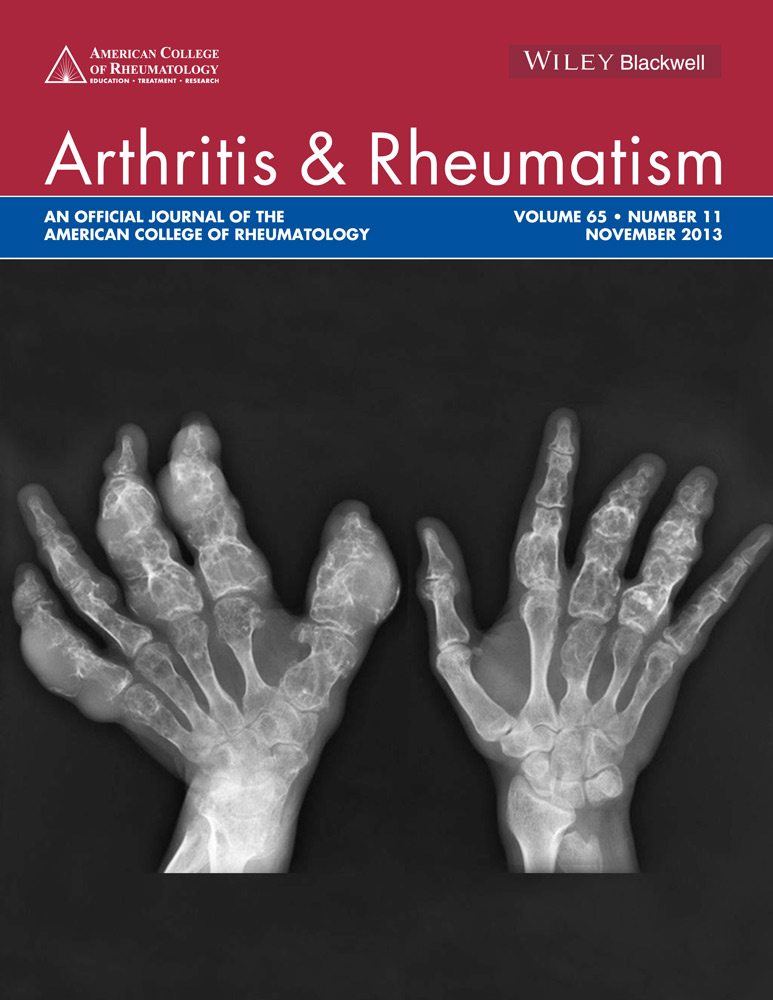Role of ADAM-17, p38 MAPK, Cathepsins, and the Proteasome Pathway in the Synthesis and Shedding of Fractalkine/CX3CL1 in Rheumatoid Arthritis
Abstract
Objective
To evaluate the mechanism of fractalkine (FKN)/CX3CL1 synthesis and shedding in rheumatoid arthritis synovial fibroblasts (RASFs) and in rat adjuvant-induced arthritis (AIA).
Methods
The effect of tumor necrosis factor α (TNFα) and/or interferon-γ (IFNγ) on FKN synthesis and shedding in human RASFs was determined over time by immunostaining, quantitative reverse transcription–polymerase chain reaction, and Western blotting. The role of protease enzymes and signaling pathways was evaluated using chemical inhibitors and small interfering RNA (siRNA). The activity of 20S proteasome in the lysates and the DNA binding of NF-κB/p65 in the nuclear fractions were evaluated. The in vivo relevance of these findings was examined in rat AIA.
Results
In RASFs, stimulation with the combination of TNFα and IFNγ induced cellular expression of FKN within 24 hours. Activation of ADAM-17, but not ADAM-10, partly mediated the proteolytic shedding and release of soluble FKN (sFKN) following TNFα/IFNγ stimulation for 24–72 hours. Compared with control siRNA, ADAM-17 siRNA markedly inhibited TNFα/IFNγ-induced sFKN production (by ∼33%). TNFα/IFNγ-induced sFKN release was markedly suppressed by inhibitors of ADAM-17, p38 MAPK, proteasome, or cathepsin inhibitor but not by inhibitors of caspase 3 or calpain. TNFα/IFNγ-induced proteasome activity also correlated with rapid degradation of IκBα and p38 MAPK phosphorylation. In vivo findings showed increased FKN expression in the joints of rats with AIA, which correlated with increased expression of ADAM-17 and phospho–p38 MAPK.
Conclusion
Our results provide new understanding of the role of ADAM-17, p38 MAPK, cathepsins, and the proteasome pathway in FKN expression and shedding. Regulating these pathways may suppress FKN-mediated inflammation and tissue destruction.




